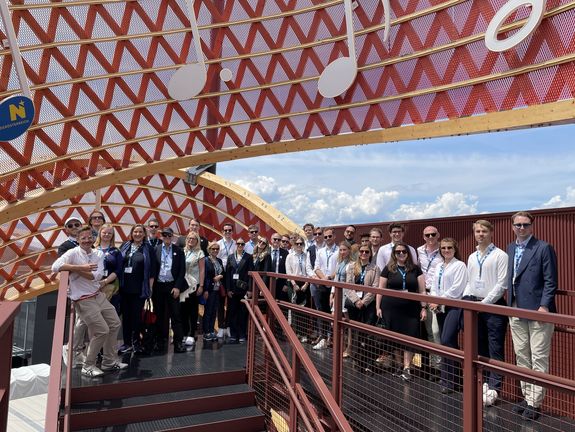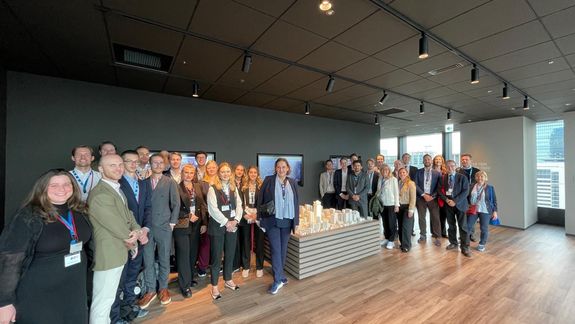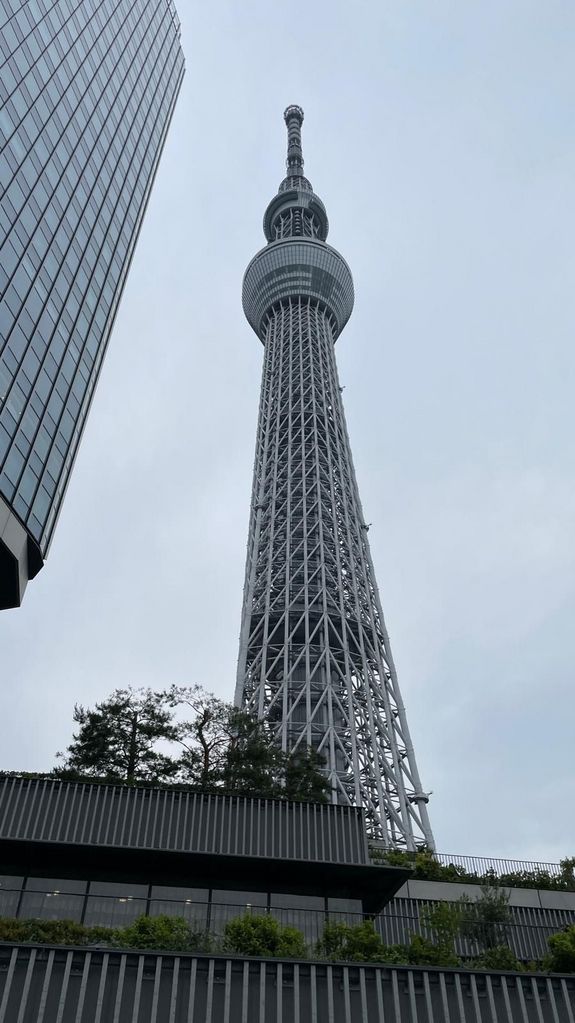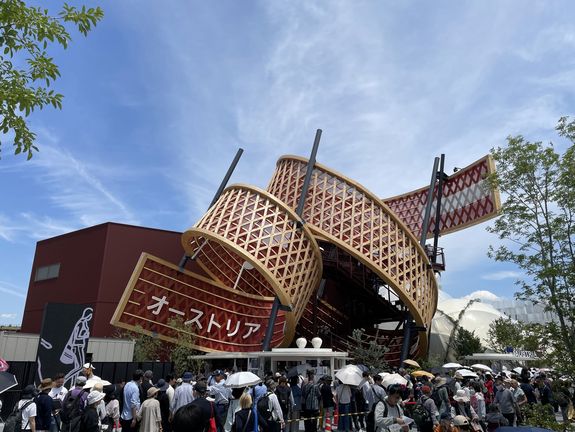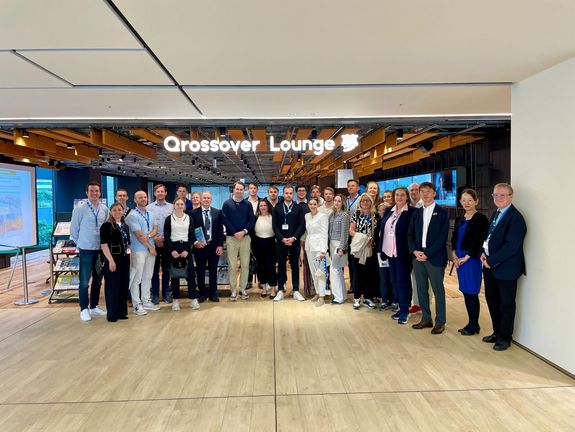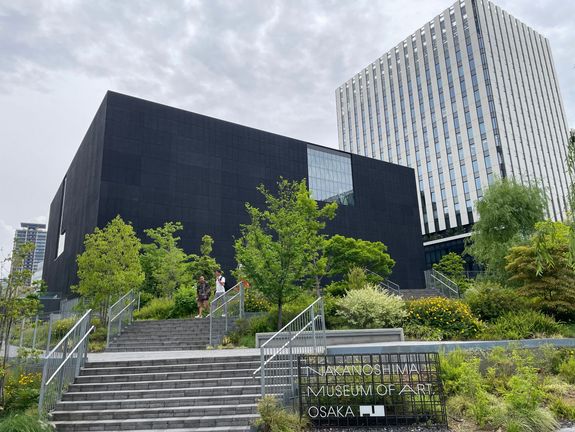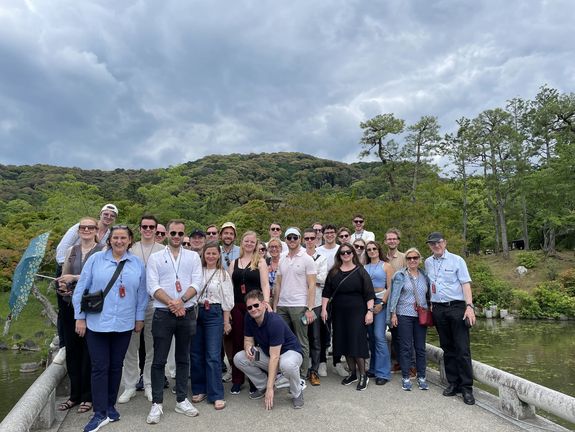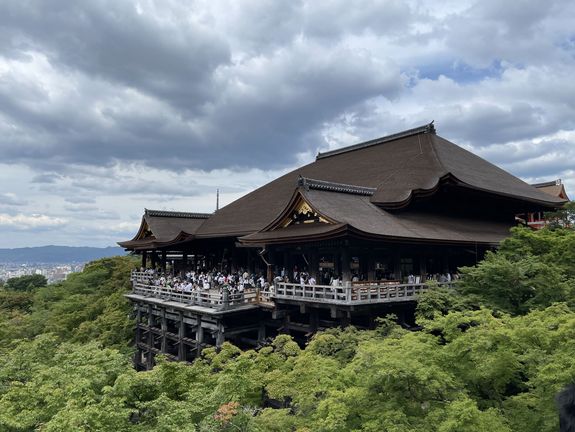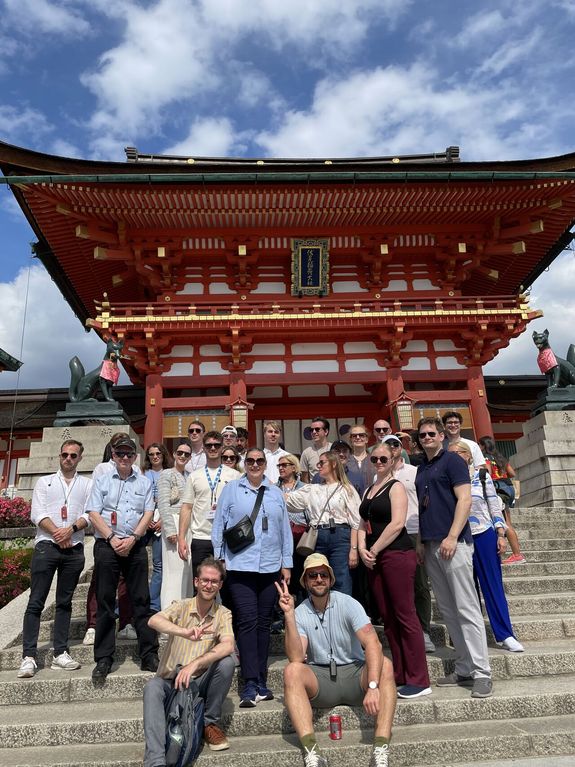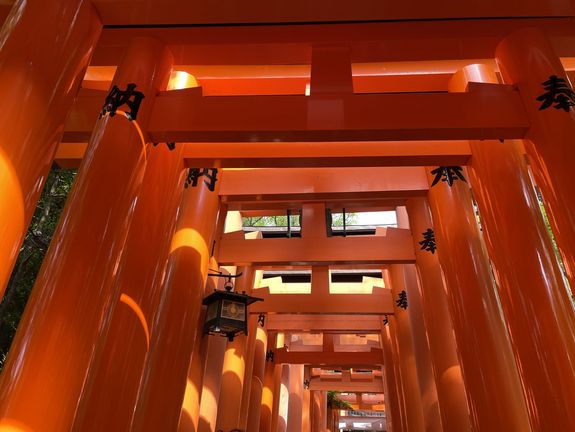Tokyo – tradition meets innovation
The first day began in the vibrant capital city of Tokyo, which is considered a symbol of Japan's progress and tradition. Highlights included a visit to Meiji Shrine, one of the most important Shinto shrines in Japan, located in the middle of a huge forest and representing a peaceful oasis in the bustling city. The tour continued to Omotesando Hills, a modern urban development project that impressed with its innovative architecture and sustainable planning. The Shinjukudistrict, known for its skyscrapers and lively streets, offers an insight into Tokyo's urban dynamism.
Special attention is paid to the Tokyo TORCH urban development project, which represents the future of urban design in Tokyo. Here, modern concepts such as sustainable construction and intelligent urban planning are visible. The Tokyo Skytree, with its impressive height of 634 meters, offers a breathtaking view of the city and symbolizes Japan's technological advances.
The day ends with a traditional dinner in the elegant Ginza district, known for its luxury shops, exquisite restaurants, and cultural atmosphere. This conclusion allowed participants to experience the harmonious connection between modern lifestyle and cultural tradition.
Osaka - EXPO 2025 and innovative urban development
The second day is entirely dedicated to EXPO 2025, which will take place in Osaka under the motto “Designing Future Society for Our Lives.” The EXPO focuses on sustainable architecture and innovative technologies. Particularly impressive is the Austrian pavilion, which stands out with its sustainable construction and creative design. The international pavilions (Portugal, Saudi Arabia, Spain, the Netherlands, France, Germany, Colombia, Switzerland, and many more) present a variety of approaches to solving global challenges, with Tech World and its forward-looking technologies forming a special focus.
A walk across the Skywalker, a viewing platform overlooking the EXPO, rounded off the day and allowed participants to view the entire EXPO landscape from a bird's eye perspective. This excursion conveys a sense of the global significance of the event and Japan's innovative strength.
Osaka - Forward-looking urban development concepts
The following day in Osaka was devoted to the innovative urban development concepts that are set to shape the city in the coming years. The Umakita Project is an example of sustainable urban planning, harmoniously integrating green spaces, housing, and workplaces. The Nakanoshima Cross, a majorinfrastructure project, connects different parts of the city and promotes mobility.
The Nakanoshima Museum of Art, which combines modern design with cultural significance, is another highlight. It shows how art and architecture can be harmonized to create livable urban spaces. Other forward-looking projects illustrate how Osaka is positioning itself as a pioneer in sustainable urban development.
Kyoto - History and culture in harmony with modernity
The last day takes participants to Kyoto, the cultural soul of Japan. Here, the focus is on historic buildings and traditional neighborhoods. KiyomizuderaTemple, a UNESCO World Heritage Site, impresses with its wooden architecture and breathtaking views of the city. The geisha district of Gion provides an insight into the time-honored culture of geishas and their art.
The Fushimi Inari Shrine, known for its countless red torii gates, symbolizes the connection between spirituality and nature. Kyoto shows how history, culture, and modern interior design can be harmoniously balanced. The city is a living museum that combines tradition and innovation.
The EXPO Field Trip 2025 ended with a sense of inspiration and understanding of the diverse developments in Japan. Participants thank the hosts and tour guides for the in-depth insights and the opportunity to experience the fascinating connection between tradition and innovation firsthand. This trip will remain etched in the minds of participants as an example of sustainable urban development, cultural diversity, and technological advances.
Over the five days, our participants walked 174,999 steps, or 129.4 km, in three cities (Tokyo, Osaka, and Kyoto)!
